Abstract
With the development of high-performance computers, it is necessary to develop efficient parallel algorithms in the field of computational fluid dynamics (CFD). In this study, a novel parallel communication strategy based on asynchronous and packaged communication is proposed. The strategy implements an aggregated communication process, which requires only one communication in each iteration step, significantly reducing the number of communications. The correctness and convergence of the novel strategy are demonstrated from both theoretical and experimental perspectives. And based on the real vehicle CHN-T model with 140 million meshes, a detailed performance comparison and analysis is performed for the novel strategy and the traditional strategy, showing that the novel strategy has significant advantages in terms of scalability. Finally, the strong scalability and weak scalability tests are carried out separately for the CHN-T model. The strong scaling efficiency can reach 74% with 10.5 billion meshes and 256,000 cores. The weak scaling parallel efficiency can reach 90% with 10 billion meshes and 179,000 cores. This research work has laid an important foundation for the development of the fast design of aircraft and cutting-edge numerical methods.

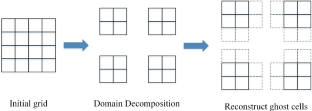
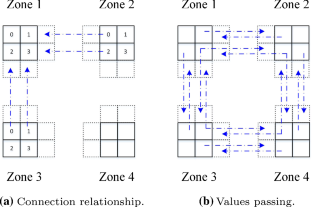
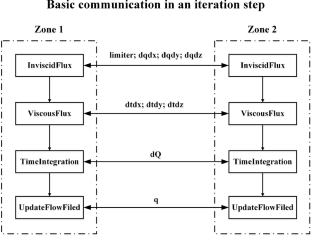
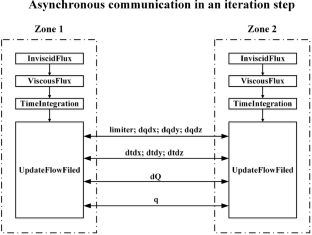
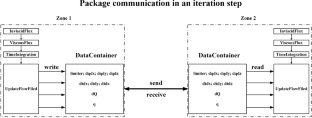

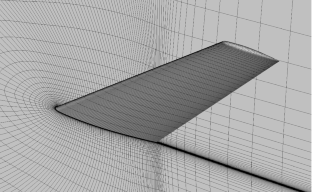
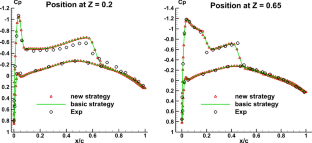
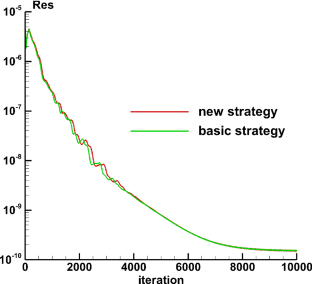
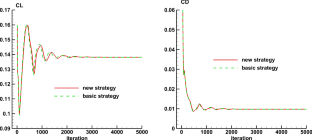
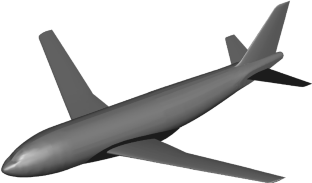

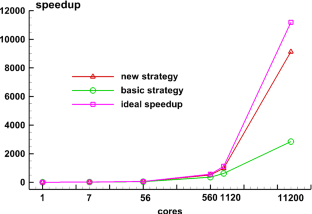
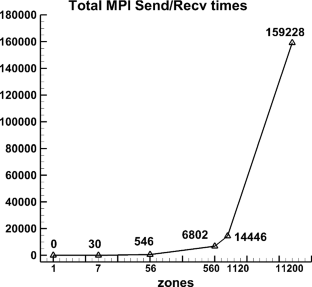
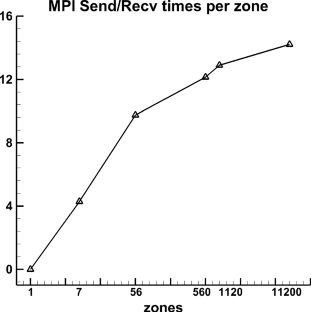
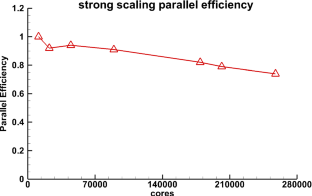
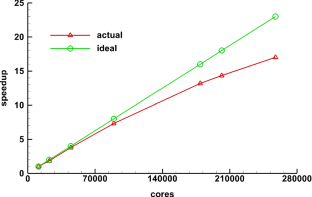
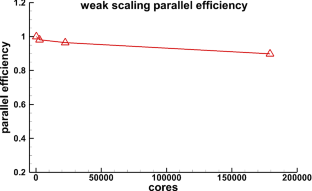
Similar content being viewed by others
Data Availibility Statement
The datasets generated during and analysed during the current study are available from the corresponding author on reasonable request.
References
Shang J (2004) Three decades of accomplishments in computational fluid dynamics. Progr Aerosp Sci 40(3):173–197
Spalart PR, Venkatakrishnan V (2016) On the role and challenges of CFD in the aerospace industry. Aeronaut J 120(1223):209–232
Witherden FD, Jameson A (2017) Future directions in computational fluid dynamics. In: 23rd AIAA Computational Fluid Dynamics Conference, p. 3791
Witherden FD, Jameson A (2017) Future directions in computational fluid dynamics. In: 23rd AIAA Computational Fluid Dynamics Conference
Spalart PR (2000) Strategies for turbulence modelling and simulations. Int J Heat Fluid Flow 21(3):252–263
Top 500 supercomputer sites; http://www.top500.org/
Slotnick J, Alonso J et al (2014) CFD vision 2030 study: A path to revolutionary computational aerosciences [R]. NASA/CR, 2014-218178
Al Farhan MA, Kaushik DK, Keyes DE (2016) Unstructured computational aerodynamics on many integrated core architecture. J Supercomput 59:97–118
Duran A, Celebi MS, Piskin S, Tuncel M (2015) Scalability of OpenFOAM for bio-medical flow simulations. J Supercomput 71(3):938–951
Economon TD, Mudigere D, Bansal G, Heinecke A, Palacios F, Park J, Smelyanskiy M, Alonso JJ, Dubey P (2016) Performance optimizations for scalable implicit rans calculations with su2. Comput Fluids 129:146–158
Jin H, Jespersen D, Mehrotra P, Biswas R, Huang L, Chapman B (2011) High performance computing using MPI and OpenMP on multi-core parallel systems. Parallel Comput 37(9):562–575
Lee S, Gounley J, Randles A, Vetter JS (2019) Performance portability study for massively parallel computational fluid dynamics application on scalable heterogeneous architectures. J Parallel Distrib Comput 129:1–13
Xue W, Jackson CW, Roy CJ (2021) An improved framework of GPU computing for CFD applications on structured grids using OpenACC. J Parallel Distribut Comput 156:64–85
Wang Y, Yan X, Zhang J (2021) Research on GPU parallel algorithm for direct numerical solution of two-dimensional compressible flows. J Supercomput 77:1–21
Kissami I, Cerin C, Benkhaldoun F, Scarella G (2021) Towards parallel CFD computation for the adapt framework. Springer, Cham
Shang Z (2013) Large-scale CFD parallel computing dealing with massive mesh. J Eng 2013:1–6
Zhong ZHAO (2020) Design of general CFD software PHengLEI. Comput Eng Sci 42(2):210–219
Zhong ZHAO (2019) PHengLEI: a large scale parallel CFD framework for arbitrary grids. Chin J Comput 42(11):2368–2383
Roe PL (1981) Approximate Riemann solvers, parameter vectors, and difference schemes. J Comput Phys 43(2):357–372
Venkatakrishnan V (1995) Convergence to steady state solutions of the Euler equations on unstructured grids with limiters. J Comput Phys 118(1):120–130
George Karypis, Vipin Kumar (1998) A fast and high quality multilevel scheme for partitioning irregular graphs. SIAM J Sci Comput 20(1):359–92
Yuntao W, Gang L, Zuobin C (2019) Summary of the first aeronautical computational fluid dynamics Redibility workshop. Acta Aerodyn Sinica 37(2):247–261
Acknowledgements
This paper was supported by the National Key Research and Development Program of China(2017YFB0202104), the National Key Research and Development Program of China(2018YFB0204301), National Numerical Windtunnel(NNW) Project, and the national supercomputer center in JiNan.
Funding
This study was funded by National Key Research and Development Program of China(2017YFB0202104, 2018YFB0204301) and National Numerical Windtunnel(NNW) Project.
Author information
Authors and Affiliations
Contributions
YunBo Wan wrote the manuscript; Lei He performed the data analyses; Yong Zhang performed the experiment; Zhong Zhao contributed significantly to the analysis and manuscript preparation; Jie Liu contributed to the conception of the study; HaoYuan Zhang helped perform the analysis with constructive discussions.
Corresponding author
Ethics declarations
Conflict of interest
None
Informed content
All authors agreed with the content and all gave explicit consent to submit and they obtained consent from the responsible authorities at the institute where the work has been carried out, before the work is submitted.
Content for publication
All authors agreed with the content for publication.
Additional information
Publisher's Note
Springer Nature remains neutral with regard to jurisdictional claims in published maps and institutional affiliations.
Rights and permissions
Springer Nature or its licensor (e.g. a society or other partner) holds exclusive rights to this article under a publishing agreement with the author(s) or other rightsholder(s); author self-archiving of the accepted manuscript version of this article is solely governed by the terms of such publishing agreement and applicable law.
About this article
Cite this article
Wan, Y., He, L., Zhang, Y. et al. An efficient communication strategy for massively parallel computation in CFD. J Supercomput 79, 7560–7583 (2023). https://doi.org/10.1007/s11227-022-04940-3
Accepted:
Published:
Issue Date:
DOI: https://doi.org/10.1007/s11227-022-04940-3




